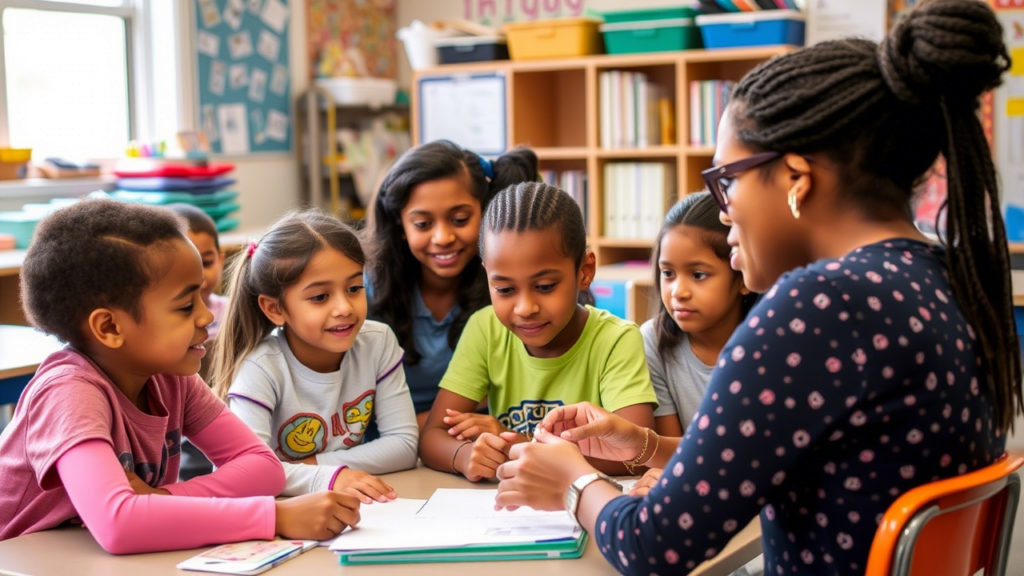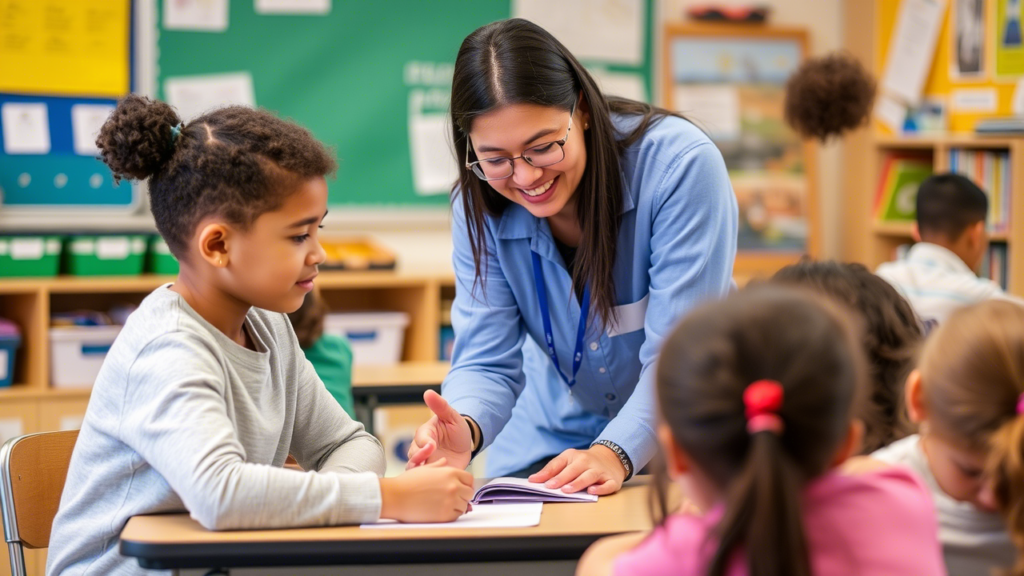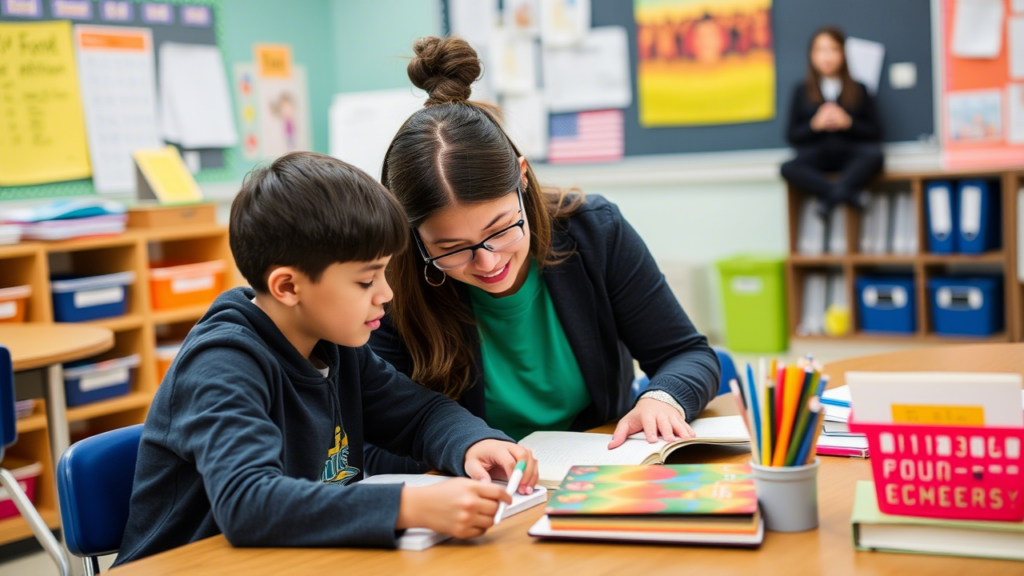The Vital Role of Para Educators in Contemporary Education
These dedicated professionals, often working behind the scenes, serve as vital links between classroom instruction and student achievement. While the term “para educator” might not be immediately familiar to everyone, their presence is felt throughout educational institutions worldwide, from elementary schools to specialized learning centers. A para educator typically works under the guidance of certified teachers, providing essential support that enables more personalized attention for students with diverse learning needs.
- The Vital Role of Para Educators in Contemporary Education
- Diverse Responsibilities and Daily Tasks of Para Educators
- Pathways to Becoming a Qualified Para Educator
- Impact of Para Educators on Student Achievement and Classroom Dynamics
- Challenges Facing Para Educators in Modern Educational Settings
- Trends and Evolving Roles of Para Educators in Education
- Conclusion: Recognizing the Indispensable Value of Para Educators
Their work encompasses a wide range of responsibilities, from assisting with classroom management to implementing individualized education plans (IEPs) for students requiring special accommodations. The significance of para educators cannot be overstated, as they contribute substantially to creating inclusive learning environments where every student can thrive. With increasing recognition of their importance, many educational systems are now formalizing their roles and establishing clear career pathways for these professionals. As we delve deeper into the world of education, it becomes evident that para educators represent a fundamental pillar of modern teaching practices, bridging gaps between traditional instruction methods and the diverse needs of contemporary learners.
Diverse Responsibilities and Daily Tasks of Para Educators
Para educators engage in a multifaceted array of responsibilities that significantly impact daily classroom operations and student learning outcomes. One of their primary functions involves providing direct instructional support to students, which includes assisting with reading comprehension exercises, helping students grasp mathematical concepts, and reinforcing lessons taught by certified teachers. They often work one-on-one with students who need additional help, breaking down complex topics into manageable parts and employing various teaching strategies to ensure understanding. In group settings, para educators facilitate small learning sessions, allowing for more focused attention than what might be possible in larger classroom environments.
Behavioral management constitutes another crucial aspect of a para educator’s role. They implement behavior modification techniques, maintain classroom order, and develop strategies to address challenging behaviors while promoting positive conduct. This responsibility extends beyond mere discipline, as para educators often serve as mediators during conflicts, helping students develop essential social skills and conflict resolution abilities. Their presence in the classroom allows teachers to focus on delivering core instruction while maintaining an environment conducive to learning.
Administrative support represents yet another dimension of a para educator’s workload. They assist in preparing instructional materials, maintaining student records, and organizing classroom resources. This administrative function ensures that classrooms run smoothly and efficiently, freeing up teachers to concentrate on lesson planning and curriculum development. Additionally, para educators frequently handle communication tasks, serving as liaisons between teachers, parents, and other educational professionals. They document student progress, prepare reports, and contribute valuable insights during Individualized Education Program (IEP) meetings.
Specialized support services form a significant portion of a para educator’s duties, particularly when working with students who have disabilities or special needs. They assist in mobility tasks, provide personal care support, and implement adaptive technologies to enhance learning experiences. For students with physical limitations, para educators may help with positioning devices, operate specialized equipment, and ensure accessibility to all classroom activities. Moreover, they play a vital role in crisis prevention and intervention, trained to recognize early warning signs of potential issues and respond appropriately to maintain safety.

Pathways to Becoming a Qualified Para Educator
Becoming a recognized para educator requires meeting specific educational and certification requirements that vary across different regions and educational systems. Most positions demand at least a high school diploma or equivalent qualification as a baseline requirement, though many districts prefer candidates with some college coursework or an associate degree in education-related fields. Numerous community colleges and technical schools offer specialized para educator programs that combine theoretical knowledge with practical classroom experience. These programs typically cover essential topics such as child development, learning theories, and classroom management techniques, preparing candidates for the diverse challenges they’ll encounter in their roles.
Certification requirements for para educators often include passing standardized assessments that evaluate fundamental skills in reading, writing, and mathematics. The ParaPro Assessment, administered by the Educational Testing Service (ETS), serves as a widely recognized evaluation tool in many states. Additionally, many educational institutions require completion of specialized training modules focusing on areas such as special education support, behavioral management strategies, and cultural competency. Some states have implemented tiered certification systems, allowing para educators to progress through different levels of qualification based on experience and continuing education.
Professional development opportunities abound for aspiring para educators seeking to enhance their credentials. Many school districts partner with local universities to offer tuition assistance programs or professional learning communities specifically designed for para educators. These initiatives often include workshops on emerging educational technologies, seminars on differentiated instruction methods, and training sessions on supporting students with diverse learning needs. Mentorship programs pair experienced para educators with newcomers, facilitating knowledge transfer and professional growth within the field.
Impact of Para Educators on Student Achievement and Classroom Dynamics
The presence of para educators in educational settings has demonstrated measurable impacts on both academic performance and overall classroom dynamics. Research studies consistently show that classrooms supported by qualified para educators exhibit improved student engagement levels and enhanced learning outcomes. When examining standardized test scores, schools with robust para educator support systems often report higher achievement levels, particularly among students receiving special education services or English Language Learners. This improvement stems from the individualized attention para educators provide, allowing for immediate clarification of concepts and reinforcement of classroom instruction in real-time.
The influence of para educators extends beyond academic metrics to encompass broader aspects of student development. Their involvement correlates with increased student confidence and willingness to participate in classroom activities. Students who might otherwise hesitate to ask questions or seek help find comfort in approaching para educators, leading to more active participation in learning processes. This relationship-building aspect proves particularly beneficial for students facing social or emotional challenges, as para educators often serve as trusted confidants within the school environment.
Classroom dynamics undergo significant transformation with the integration of para educators. Teachers report greater flexibility in lesson delivery and assessment methods, knowing that para educators can provide targeted support where needed. This collaboration enables more dynamic classroom arrangements, including flexible grouping strategies and differentiated instruction approaches. The presence of para educators facilitates smoother transitions between activities and reduces transition times, maximizing instructional minutes throughout the school day. Additionally, their support allows teachers to implement more complex projects and hands-on learning experiences that might otherwise prove challenging to manage with limited resources.
The impact of para educators becomes particularly evident in inclusive classrooms where students with diverse learning needs learn alongside their peers. Their expertise in modifying assignments, adapting materials, and implementing accommodations helps create truly accessible learning environments. This support structure enables teachers to maintain high academic standards while ensuring all students can access grade-level content. Studies indicate that schools with well-implemented para educator programs demonstrate higher rates of successful inclusion, with fewer students requiring separate special education placements.

Challenges Facing Para Educators in Modern Educational Settings
Despite their crucial role in educational systems, para educators face numerous challenges that impact both their professional effectiveness and personal well-being. One of the most pressing issues revolves around compensation and career advancement opportunities. Many para educators work full-time hours yet receive wages that fall below living standards in their respective regions. This financial strain often forces them to seek additional employment outside of education, potentially compromising their availability and energy levels during school hours. The lack of clear career progression pathways further exacerbates this challenge, as para educators frequently encounter barriers when attempting to transition into fully certified teaching positions despite their extensive classroom experience.
Workload management presents another significant hurdle for para educators. The nature of their role often requires them to juggle multiple responsibilities simultaneously, from providing one-on-one student support to handling administrative tasks and classroom management duties. This multitasking demands can lead to overwhelming workloads, particularly when supporting students with intensive needs or managing large class sizes. The pressure to maintain high-quality support while addressing competing priorities frequently results in stress and burnout, contributing to relatively high turnover rates within the profession.
Professional recognition remains an ongoing challenge for para educators, with many feeling undervalued or misunderstood by other educational professionals. Despite their critical contributions to student success, para educators sometimes face misconceptions about their role and capabilities. This lack of acknowledgment can manifest in exclusion from important decision-making processes or professional development opportunities. Additionally, the hierarchical nature of educational systems occasionally leads to unclear boundaries between teacher and para educator responsibilities, creating potential conflicts and undermining collaborative efforts.
Resource limitations compound these challenges, as para educators often must accomplish their tasks with insufficient materials or outdated equipment. The absence of dedicated workspace or appropriate tools for supporting students with special needs can hinder their ability to provide optimal assistance. Furthermore, varying levels of administrative support across different schools and districts create inconsistent working conditions, making it difficult for para educators to establish reliable professional routines and expectations.
Trends and Evolving Roles of Para Educators in Education
The para educators in education systems appears increasingly promising as technological advancements and changing educational paradigms reshape their roles and responsibilities. Emerging trends suggest that para educators will become even more integral to educational success, particularly as schools adopt more personalized learning approaches and data-driven instruction methods. Artificial intelligence-powered educational tools are creating new opportunities for para educators to leverage technology in supporting student learning, from implementing adaptive learning platforms to utilizing sophisticated data analytics for tracking individual progress. These technological enhancements enable para educators to provide more precise interventions and targeted support, amplifying their impact on student achievement.
The growing emphasis on social-emotional learning (SEL) is transforming para educators’ roles into more comprehensive support positions that extend beyond academic assistance. Schools are recognizing the value para educators bring to mental health support and trauma-informed care, leading to expanded responsibilities in these areas. Many districts are implementing specialized training programs that equip para educators with advanced skills in crisis intervention, mindfulness techniques, and restorative practices. This evolution aligns with the increasing awareness of the critical connection between emotional well-being and academic success, positioning para educators as key contributors to holistic student development.
Remote and hybrid learning models, accelerated by global circumstances, have created new dimensions for para educator involvement. Virtual support systems now require para educators to master digital collaboration tools while maintaining meaningful connections with students in online environments. This shift has led to the emergence of specialized remote support roles, where para educators facilitate virtual learning sessions, monitor online engagement, and provide technical assistance to both students and families navigating digital learning platforms. The ability to adapt to these new formats demonstrates para educators’ versatility and commitment to supporting education in diverse formats.
As educational systems continue to evolve, para educators are likely to assume more prominent roles in curriculum development and instructional design. Their firsthand experience with diverse student needs positions them as valuable contributors to creating inclusive learning materials and developing culturally responsive teaching strategies. The trend toward Universal Design for Learning (UDL) principles in curriculum creation particularly benefits from para educators’ practical insights, leading to more accessible and engaging educational experiences for all students. This increased involvement in educational planning reflects the growing recognition of para educators as essential partners in shaping effective learning environments.

| Future Trend | Impact on Para Educators | Expected Benefits |
|---|---|---|
| AI Integration | Enhanced data analysis capabilities | More targeted student interventions |
| SEL Focus | Expanded mental health support roles | Improved student well-being outcomes |
| Remote Learning | Development of virtual support skills | Increased flexibility in service delivery |
| Policy Changes | Better compensation and career paths | Higher retention rates and professional satisfaction |
| Curriculum Involvement | Greater input in instructional design | More inclusive and effective learning materials |
Conclusion: Recognizing the Indispensable Value of Para Educators
The transformative impact of para educators on modern education systems cannot be overstated. These dedicated professionals have evolved far beyond their traditional support roles to become essential architects of inclusive learning environments, directly influencing student success across diverse educational settings.
Their multifaceted contributions, spanning academic support, behavioral management, and social-emotional development, create a foundation for comprehensive student growth that extends well beyond conventional classroom boundaries. As educational landscapes continue to shift toward more personalized and inclusive approaches, the role of para educators becomes increasingly vital in bridging gaps between instructional theory and practical application.
